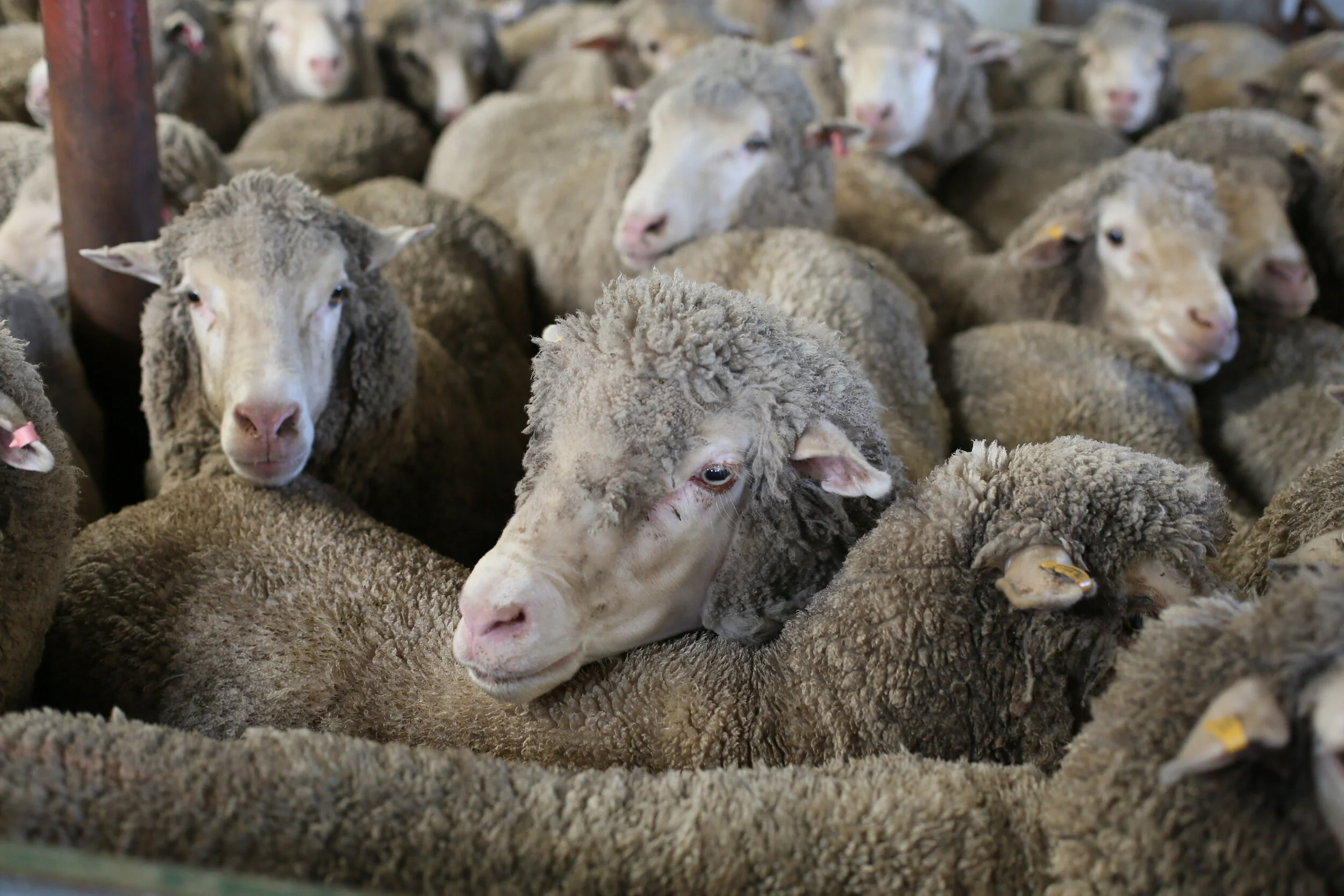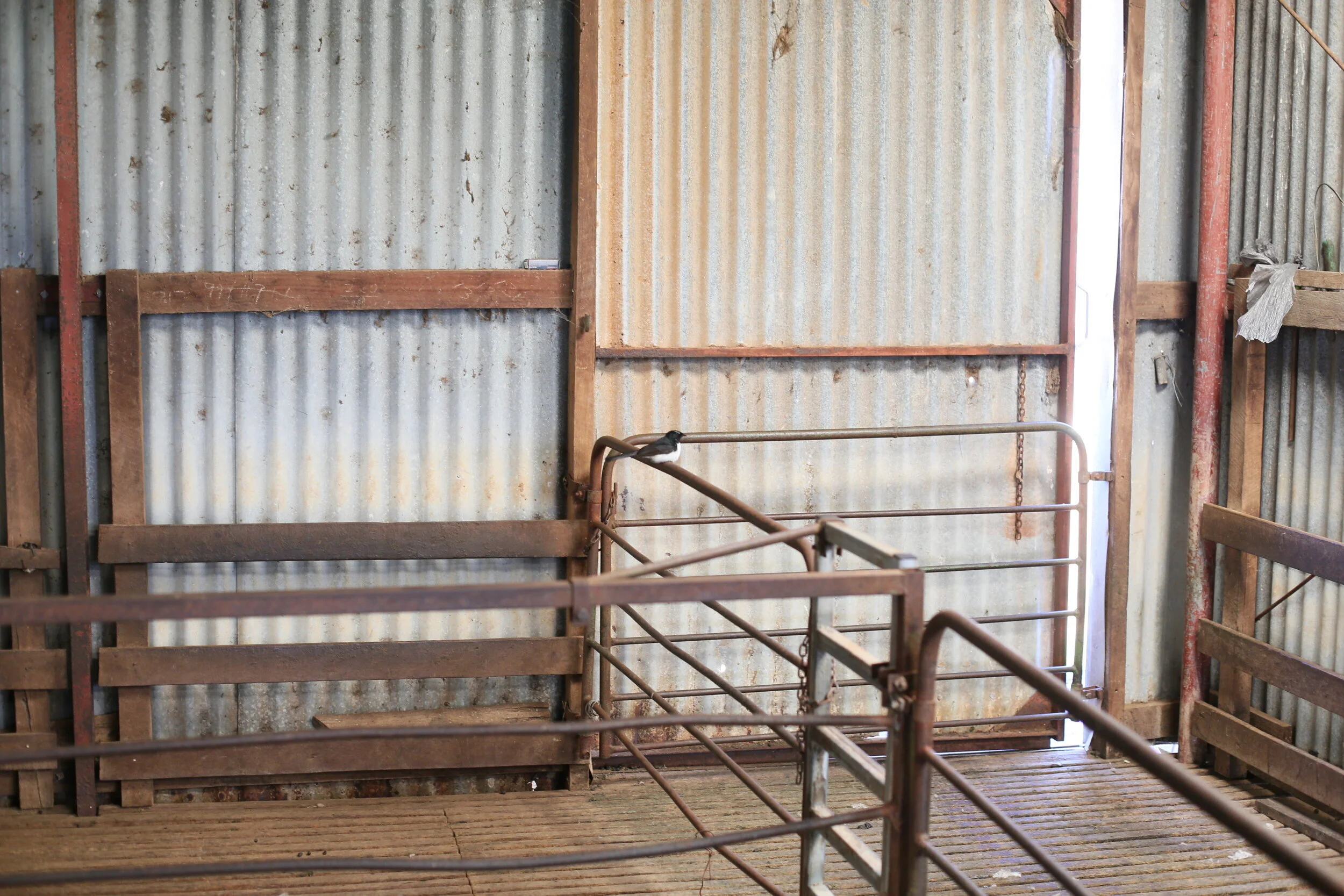Rural Utopias Residency: Elizabeth Pedler in Wellstead #1
Elizabeth Pedler is currently working with the community of Wellstead. This work is one of those forming part of one of Spaced’s current programs, Rural Utopias.
An artist interested in the range of participation possible in art, Elizabeth's practice spans from playful and interactive installations to collaborative relational aesthetics. Identity, food, and community involvement are areas of particular focus, and have led to significant artistic development in her recent arts practice, engaging with audiences through the sharing of experiences and storytelling.
Here, Elizabeth shares an update from Wellstead.
During the first week in Wellstead, I spent time working on the farm, as much as is documenting that work in audio, video and still photographs. Helping out moving and drenching sheep, as well as meeting locals, and observing and documenting shearing. Though this was the first week of the residency for Rural Utopias, I’d spent time in Wellstead before, visiting here and there for a few days, up to a week, over the last 18 months. This residency is the formalisation of a process of engagement, a collaboration between myself, Richard Davy (my host and local contact), and the community of Wellstead; to try to understand a way of life very different to my own.
After arriving in Wellstead on Friday, by Saturday morning I was already absorbed into the work of the farm with Richard, Kerry (Richard’s partner), and the two farm dogs Aspen and Bruce. Richard showed me how to use the drench gun, inserting the tip into the sheep’s mouth, then pushing the trigger to administer a dose of the organic drench: a sweet, earthy smelling mix of molasses, apple cider vinegar, and other ingredients to assist gut flora and protect against parasites. I’d helped move the sheep through the yard before, but using the gun required a much closer relationship. Holding their soft faces in my hands, their glassy fearful eyes and long lashes, this was the closest I’d been to the sheep. Some submitted without protest, or chewed eagerly on the gun, others cannily moved their heads down between the legs of other sheep ahead. I had to slip my hand down between the wooly, seed flecked damp bodies to lift up a head, guiding it up by placing my hand firmly under the jaw then holding it just long enough to insert to gun into the mouth, and feeling the muscles around the throat swallowing the juice on its way down. The work was difficult at first, and I was slow, but began picking up speed as my hands learned through the movements. Once each group of sheep was drenched, and any that needed crutching marked with blue chalk by Kerry, the gate was removed from the end. I watched as the sheep were let out to a holding pen. Some were slow to get moving, others ran and jumped in swift, bounding leaps, their bodies lifting a metre into the air as they kicked their legs out behind. We drenched 800 sheep before lunchtime.
Following lunch on Saturday we went to Green Ranges Country Club and joined the modest crowd watching the AFL Grand Final. I chatted to locals, played a round of darts, and watched as the GWS Giants were roundly beaten by the Richmond Tigers. Sunday while Kerry planted some seedlings in the garden, I helped Richard with crutching the chalk-marked sheep, then in the evening we went in to Wellstead for a pre-harvest sundowner. I met some of the people who live in the area, some of whom I’d spoken to before, and talked about the residency and International Art Space.
Monday, I spent more time with Richard crutching the sheep, grabbing them from the pen and pushing their bodies over so they roll onto their sit-bones, then pulling them out of the pen by their front legs, so that the dags of matted, dirty wool could be clipped from their crotch. This was hard work, and I really felt my inexperience, as did the sheep, as I fought with the heavy rams and recalcitrant lambs. Seeing Richard pull sheep off their legs, they would soften in his grip, persuaded as his grasp found the right place, delivered the right amount of pressure. Being a part of crutching the sheep prepared me for Tuesday and Wednesday, when I went to the Lock property down the road to watch the lambs being shorn.
On Tuesday I came in to the shearing shed on the Lock Farm, and was shown around by Craig as they prepared to shear more than 2000 lambs. The team was setting up, five shearers, and a half dozen roustabouts. At 7.30am the music fired up, and the shearers got to work, dragging sheep out of the pens, the clippers moving through wool, cleanly separating wool fleece from fresh-shorn pink skin. Observing the shearers work was mesmerising, seeing the skill in their ceaseless movements, they way the sheep were rolled gently around 180 degrees to release a fleece in a single unbroken piece, then watching the jumping out of their hands and skitter down the chute to the pens below. Hands appeared as if from nowhere to grab wool, sweeping it off the walkway, and throwing it across the table in the centre of the room. Roustabouts picked and graded the wool, sorting it into bins and bags. Fluid movements, to the thumping bass of a playlist that kept energy high; ACDC, INXS, Queen. A smooth operational circuit where all parts worked together, no one lagging or stopping until the music fell silent, signalling a break. I recorded video and audio, and took photos of the crew at work.
I came back on Wednesday to record more, and Craig insisted I get up and have a go at shearing. He got a sheep, and had me push the clippers from its tail along its back, up towards the head. Needless to say, I was terrible. For fear of cutting the sheep’s skin, I left too much wool behind. Even before my experience with the clippers, it was clear how much skill went into the gentle, swift movements of the shearers, as their hands gently rolled the sheep’s bodies and kept them immobile as they directed the sharp blades of the clippers in a delicate choreography, each shearing hundreds of sheep a day.
In between shearing, drenching, time with my camera wandering outdoors, and a trip in to Albany, Richard and Kerry took me to the beach for chilling ocean swims. The water was fresh from the Antarctic, and though the sun was hot for September, the water was still biting cold. On Monday we watched as a whale and calf rolled in the surf, perhaps four hundred metres from the shore. Close enough to swim out to, had the water been warm enough to remain in for more than a minute.
My accomodation is a Nissen hut, a shed made from a curved piece of aluminium, installed on the property before the farmhouse was built. I met at the sundowner a niece of the farmer who owned the Windi Windi property in the 1950s, who had the hut brought in. Though I shared most meals with Richard and Kerry at the farmhouse, the Nissen hut offered welcome isolation, an opportunity to sit and rest, undisturbed, and consider my thoughts each day.
On Thursday, before departing I visited another neighbouring farm, and got into the swather and observed as canola stalks were cut into rows to dry out before the seeds can fall. Later, on my way home, I stopped by the side of the road to capture some video of the roadside bushes flowering. Each of the plants has so brief a season that I know these clouds of pink and purple will have disappeared by the next time I visit.
The first week of the residency was productive, and thought provoking, as I met locals and got involved in activities and events, embedded in the work and social life of Wellstead. The experiences of the shearing, and drenching, stand out as moments to me, as well as the many locals that I spent time chatting with.
There’s perhaps something I’ve left out so far, a tension in my experience that isn’t immediately visible to someone reading this account. Though my hosts are welcoming, and the work fascinating, I find myself, my relationship with this community, not so easy to navigate. I did not grow up in this place, this isn’t my land, or my people. Though my both my grandfathers farmed sheep, I grew up in the suburbs, and have lived my life mostly in Perth. In this residency, I’m trying to understand what it is about this place that captivated me when I first visited last year, and also trying to understand what it is about life on a farm that has shaped and defined this country, this culture in many ways. I’m a product and a part of this culture, but I also feel myself as being in some ways separate from it. I choose not to eat meat, and I believe we are on the brink of a climate crisis, and it seems apparent to me that the ways we relate to this land are in a moment of re-negotiation, as they perhaps have been ever since white settlers, my ancestors, first arrived. I feel like an outsider here, and that will not be erased through watching shearing, or handling sheep, but in trying to measure the distance between us, trying to understand the differences, perhaps I can learn something. As an artist in residence, this isn’t entirely foreign, I’m often in unfamiliar environments. By being involved, and through doing as much as observing, I’m trying to find both the chasms of difference, and also the bridges between. I know that I’m still at the beginning of this process in Wellstead, but I look forward to the journey ahead.
-Elizabeth Pedler


